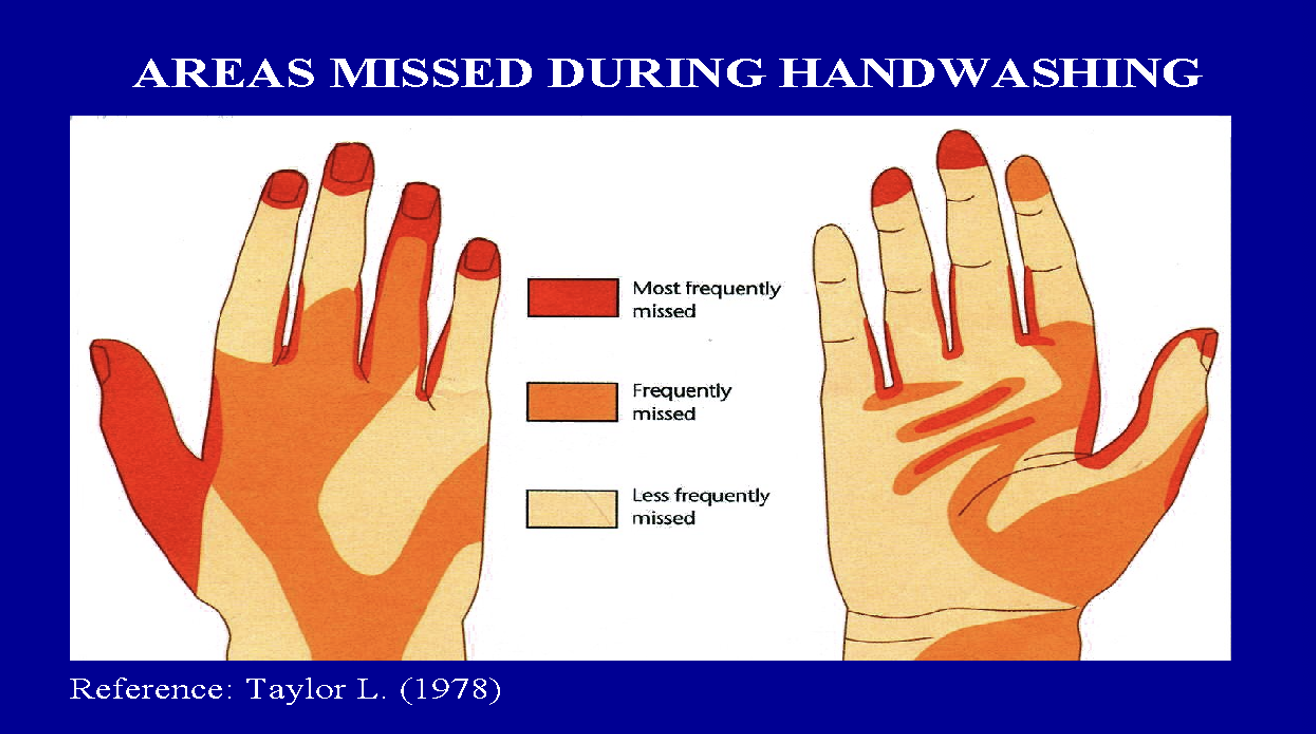ITC PART 2
1/16
Earn XP
Description and Tags
BBTE, hand washing, alcohol hand gel, hand moisturiser
Name | Mastery | Learn | Test | Matching | Spaced |
|---|
No study sessions yet.
17 Terms
why is handwashing emphasised so much
hand hygiene is the single most effective strategy to reduce the risks of cross infection
when should you clean your hands (5)
before patient contact
before aseptic technique/ tasks
after body fluid exposure risk
after patient contact
after contact with patient surroundings
when should staff be BBTE
whenever they are in a clinical area where they can reasonably expect to come into contact with patients/ the immediate patient environment
e.g. patient wards, theatres and out-patient departments
what is the guideline for ties in the clinical environment
ties should be removed or secured
when should soap and water be used to clean hands
when hands are visibly soiled
the patient is experiencing vomiting and/ or diarrhoea
there is direct hand contact with bodily fluids i.e. if gloves have not been worn
there is an outbreak of Norovirus, Clostridium difficile or diarrhoeal illnesses
after using the toilet
before and after preparing, handling, or eating food
before and after an aseptic technique
after removing gloves
at the start of a shift and at the end of a shift
after completing a task i.e. cleaning equipment
when should alcohol hand rub be used
The NPSA (2008) advises that:
alcohol hand rub is the recommended product to use in the majority of patient care situations on non-soiled hands
because it is more effective, quicker to use, better tolerated by hands and can be used at the point of care
pointers for handwashing
hands must be wet before applying liquid soap
good technique is more important than cleanser or length of time hand washing
dry hands thoroughly with single use paper towels
bar soap must not be used - cross infection risk
cover any abrasions or cuts with a waterproof dressing
diagram showing areas of hands most commonly missed during handwashing

hand drying technique
use disposable paper towels
they effectively rub away transient organisms and the old, dead skin cells that are loosely attached to the surface of the hands
dispose of paper towels in foot operated bin
when is hand disinfection necessary
where hands are more likely to be contaminated by microorganisms
how is hand disinfection achieved
a thorough hand wash with soap and water
followed by the use of alcohol hand rub
HANDS MUST BE PHYSICALLY CLEAN BEFORE ALCOHOL IS APPLIED
alcohol hand rub procedure
follow hand washing technique once alcohol is dispensed
it is unnecessary to rinse hands or use a paper towel
allow to dry
why are medical gloves recommended
medical gloves are recommended to reduce the risk of:
contamination of healthcare workers hands by blood and other bodily fluids
microorganisms dissemination to the environment and of transmission from the healthcare worker to the patient and vice versa
guidelines for medical gloves
always remove gloves immediately following completion of task for which they were worn
glove usage is not a substitute for thorough hand hygiene
hands should be washed with soap and water before donning gloves if carrying out any aseptic procedure
hands should be washed with soap and water after removal of all gloves as hands may be contaminated during the removal of gloves
ensure gloves fit snugly
establish whether a patient has a latex sensitisation on or before each admission
why is persistent skin irritation a concern in healthcare
bacterial count increases when the skin is damaged
it can place patients at risk because hands cannot be adequately decontaminated due to breaches in skin integrity - this also places the healthcare worker at risk of infection
hand cream should be used at the end of shifts, at break times and when off duty - communal jars of hand creams must not be used
what are transient microorganisms
transient microorganisms: microorganisms found on the surface of the skin
“transient” because direct contact results in the transfer of these to and from the hands
easily removed with hand washing » reduces chance of cross infection
any damaged skin, moisture or ring increases the possibility of colonisation with microorganisms
what are resident microorganisms
resident microorganisms: microorganisms usually called normal flora or commensals
located in the deep-seated epidermis, hair follicles, and sweat glands and beneath fingernails
do not readily cause infections and are not easily removed - however during invasive procedures they could enter the patient’s deep tissues and establish an infection there